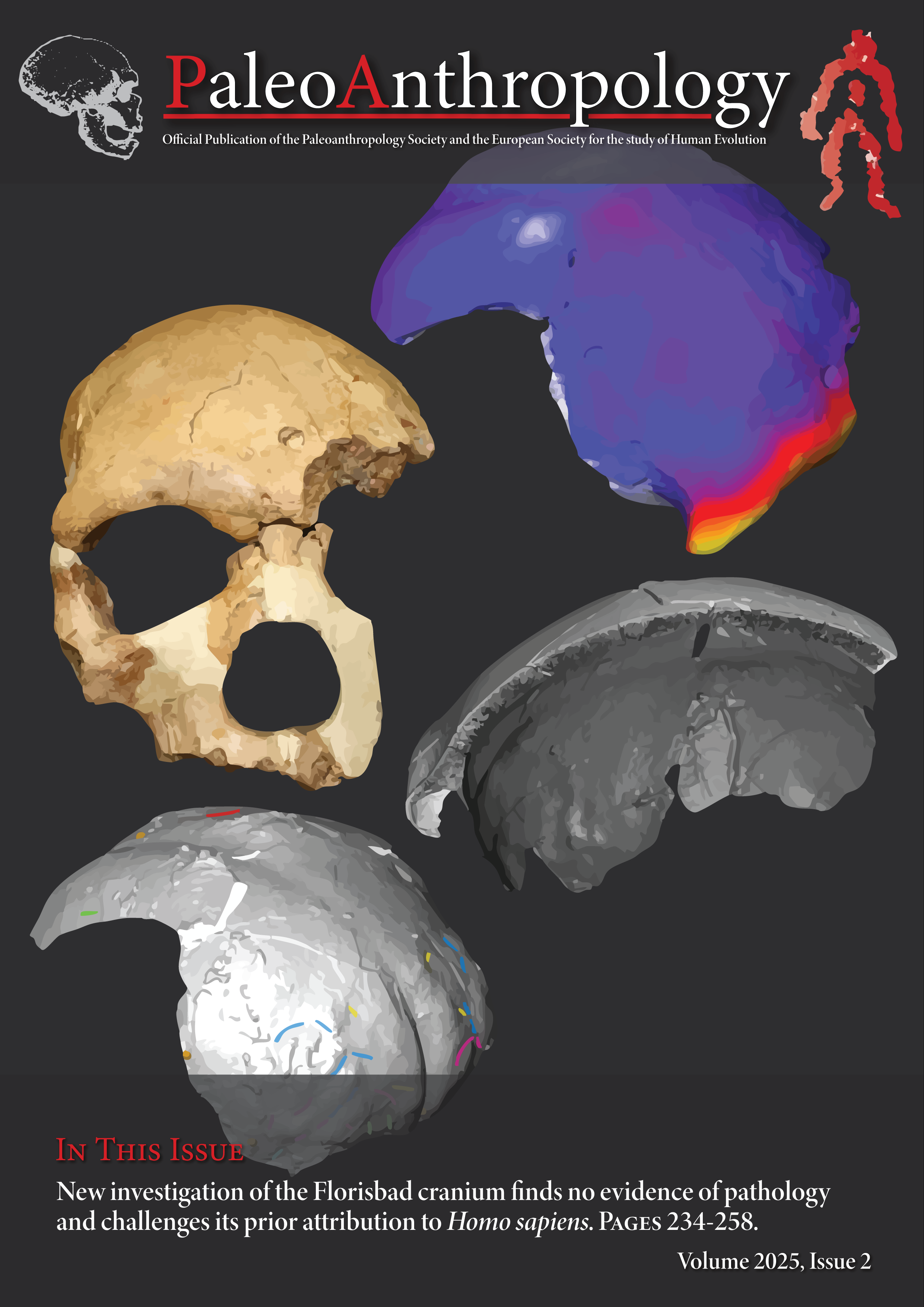Palaeoproteomic Contributions, and Current Limitations, to Understanding Middle and Late Pleistocene Human Evolution Special Issue: What’s in a Name? Late Middle and Early Late Pleistocene Hominin Systematics
Main Article Content
Abstract
Over the past three decades, a new picture of our own ancestral past has emerged through the elucidation of the complex genetic relationships between Neanderthals, Denisovans, and modern humans by the direct analysis of ancient hominin genomes. These genetic insights have largely been derived from ancient genomes dating to the Late Pleistocene. How preceding and additional contemporary hominin populations fit into their story is partly unknown. It has become clear that Middle and Late Pleistocene hominin populations were highly diverse, however. These hominins were present across Africa and Eurasia, with large portions of the hominin and faunal fossil record (far) beyond the reach of ancient DNA research. Palaeoproteomic analysis of skeletal proteomes has recently emerged as a potential additional biomolecular approach across the Pleistocene, providing molecular evidence on hominin evolutionary relationships, as well as insights into their behaviour through the palaeoproteomic analysis of associated zooarchaeological assemblages. Here, we summarise the state-of-the-art of Middle and Late Pleistocene palaeoproteomics, and its relevance to refining both our evolutionary as well as our ecological and behavioural understanding of the human past within this chronological window.

